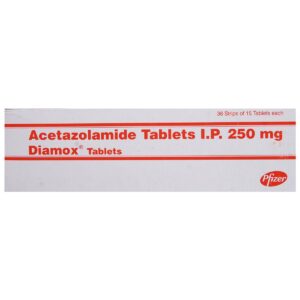ACETAZOLAMIDE
ACETAZOLAMIDE: Acetazolamide is a medication that belongs to the class of drugs known as carbonic anhydrase inhibitors. It is commonly used to treat a variety of conditions including glaucoma, epilepsy, altitude sickness, and edema associated with congestive heart failure.
The primary mechanism of action of acetazolamide is through inhibition of the enzyme carbonic anhydrase, which is responsible for catalyzing the reversible reaction between carbon dioxide and water to form carbonic acid. By inhibiting this enzyme, acetazolamide reduces the production of bicarbonate ions, leading to a decrease in the reabsorption of sodium and water in the renal tubules. This results in an increased excretion of sodium, water, and bicarbonate ions.
The dose of acetazolamide may vary depending on the condition being treated. For glaucoma, the usual recommended dose is 250 to 500 mg per day, divided into two to four smaller doses. For epilepsy, the starting dose is typically 250 mg per day, increasing to 500 mg per day if necessary. For altitude sickness, the recommended dose is 125 mg to 250 mg twice a day, starting one day before ascent and continuing for the first two days at high altitude.
Although acetazolamide is generally well-tolerated, it may cause some side effects. Common side effects include nausea, vomiting, loss of appetite, diarrhea, increased urination, and numbness or tingling in the hands or feet. Some individuals may experience more serious side effects such as kidney stones, blood disorders, allergic reactions, or a rare condition known as aplastic anemia. It is important to consult a healthcare professional for a complete list of potential side effects and to discuss any concerns or questions about the medication.


